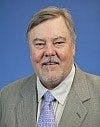IES and AMA debate outdoor lighting at Strategies in Light (MAGAZINE)
We've covered the controversy over the American Medical Association (AMA) issuing recommendations on outdoor street lighting for nearly two years. In June 2016, the organization suggested a 3000K or warmer CCT, and we suggested that the AMA had no position to publish guidance to the solid-state lighting (SSL) industry. In the time that has since passed, the AMA has refused to engage in discussion or debate on the matter and has rebuffed the Illuminating Engineering Society (IES) as it sought to enter a collaborative discussion. So it was surprising that Strategies in Light was able to get the AMA and IES side by side in a panel discussion that was moderated by lighting designer Jim Benya of the Benya Burnett Consultancy. The discussion was passionate, and the debate persists.
Dr. Mario Motta represented the AMA. He is a cardiologist at North Shore Cardiovascular Associates in the Boston area, a teaching professor at the Tufts University School of Medicine, and an accomplished amateur astronomer. Brian Liebel represented the IES. He is director of standards and research at the organization, has been an active participant in the IES for 30 years, and has been on the board of directors for more than two years.
Motta took an aggressive stance in his opening statements, making no apologies for the AMA stepping onto IES turf. He suggested that had the lighting industry done its job well, then AMA involvement would not have been needed. Motta presented as fact that blue light at night was essentially a Class 2 carcinogen, on the same level as tobacco smoke.
He did address the common complaint that CCT is not a good metric for recommending outdoor lighting, but again pushed back on the lighting industry and said that industry uses CCT so the AMA had no other choice, and the lighting industry should do its job and develop a better metric. And Motta said the AMA in no way laments its recommendation but rather today would push the recommendation down to 2700K.
Liebel took the podium after Motta and was equally aggressive. He repeatedly pointed out the lack of experience in engineering and roadway science on the AMA panel, saying, "Balance is lacking in the AMA process." He noted that the IES has more than 100 members on its roadway committee and that the agency has tried many times since 2016 to move toward collaboration.
Liebel then discussed specific shortcomings in the AMA recommendation. He said the organization's statements about glare were simply inaccurate. The AMA cited studies but did not correctly translate conclusions from those studies.
More significantly, Liebel said the AMA did not consider the safety impact in the CCT recommendation - which is the reason we have outdoor lighting at night. He cited a Florida accident in which a father walking along a road was killed, in an instance where 20-30% greater detection distance enabled, perhaps, by cooler-CCT lighting might have made a difference.
The debate will continue. Both sides care about safety but come at it from different perspectives. But make no mistake that the AMA approach comes with ego and perceived authority that is simply not healthy for the future, while the IES remains focused on working together and achieving consensus.

Maury Wright | Editor in Chief
Maury Wright is an electronics engineer turned technology journalist, who has focused specifically on the LED & Lighting industry for the past decade. Wright first wrote for LEDs Magazine as a contractor in 2010, and took over as Editor-in-Chief in 2012. He has broad experience in technology areas ranging from microprocessors to digital media to wireless networks that he gained over 30 years in the trade press. Wright has experience running global editorial operations, such as during his tenure as worldwide editorial director of EDN Magazine, and has been instrumental in launching publication websites going back to the earliest days of the Internet. Wright has won numerous industry awards, including multiple ASBPE national awards for B2B journalism excellence, and has received finalist recognition for LEDs Magazine in the FOLIO Eddie Awards. He received a BS in electrical engineering from Auburn University.




![The DesignLights Consortium continues to make progress in shifting outdoor lighting products and implementation practices toward a more restrained and thoughtful strategy. [Image does not represent a DLC qualified fixture.] The DesignLights Consortium continues to make progress in shifting outdoor lighting products and implementation practices toward a more restrained and thoughtful strategy. [Image does not represent a DLC qualified fixture.]](https://img.ledsmagazine.com/files/base/ebm/leds/image/2024/08/66be810888ae93f656446f61-dreamstime_m_265700653.png?auto=format,compress&fit=&q=45&h=139&height=139&w=250&width=250)
